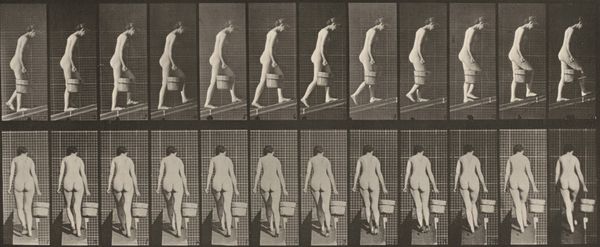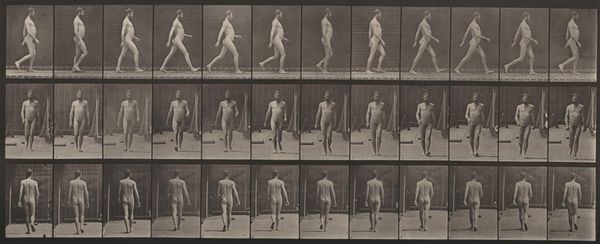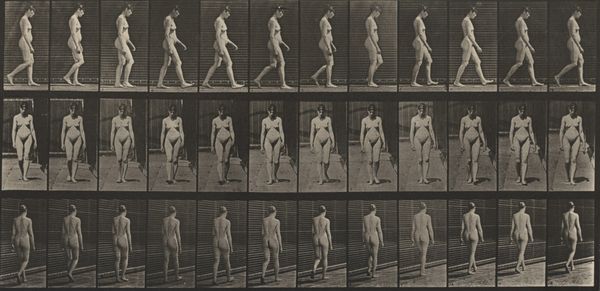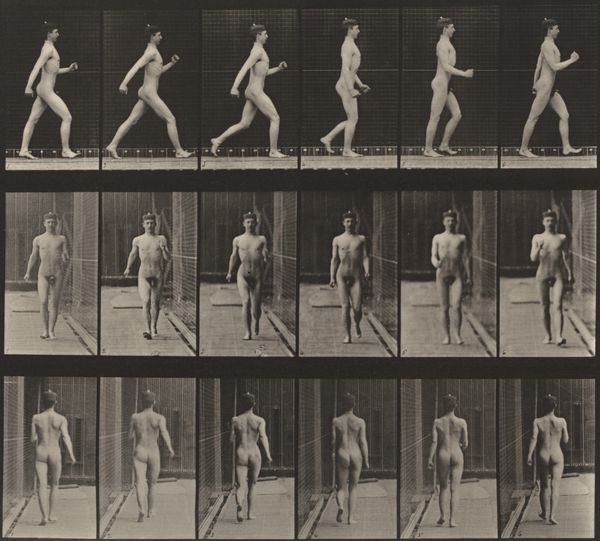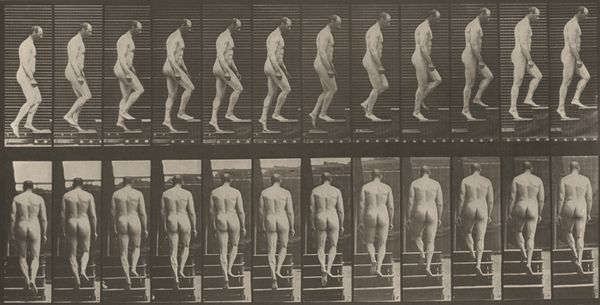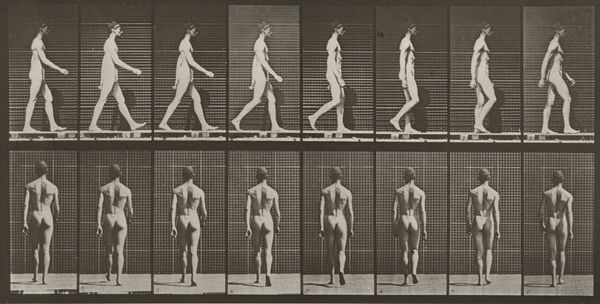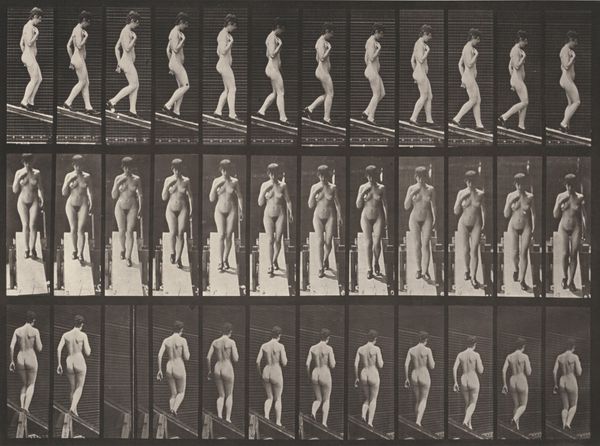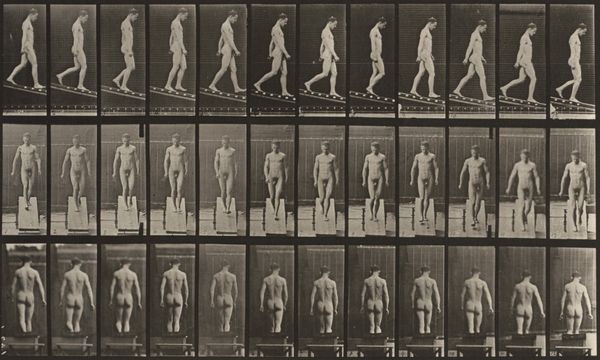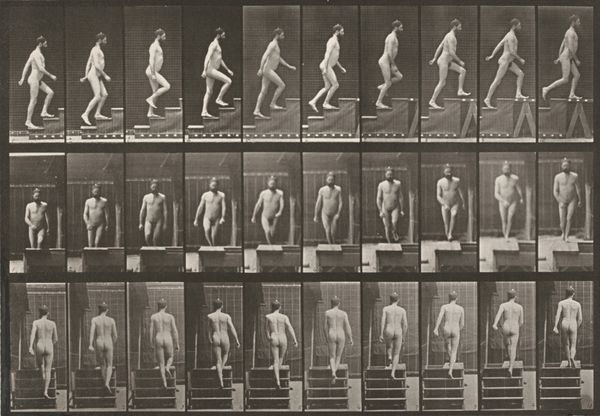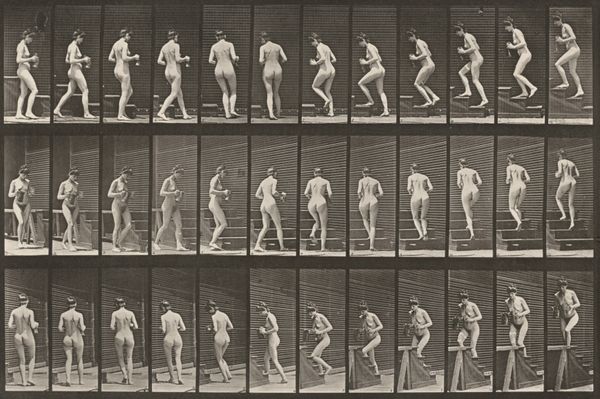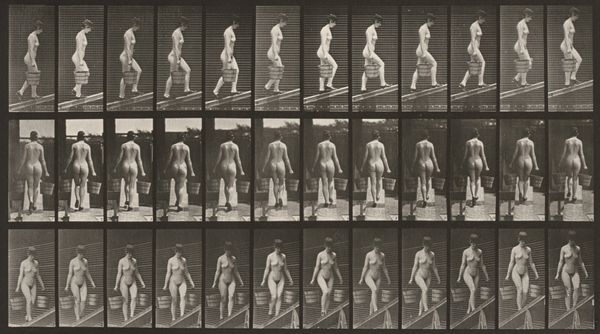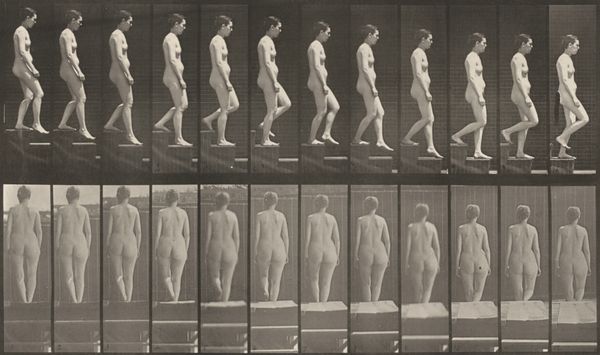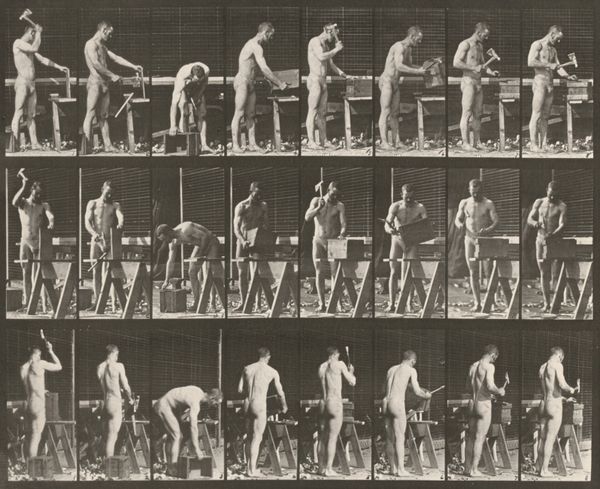
Dimensions: image: 21.8 × 37 cm (8 9/16 × 14 9/16 in.) sheet: 48.7 × 61.3 cm (19 3/16 × 24 1/8 in.)
Copyright: National Gallery of Art: CC0 1.0
Editor: So, this is Eadweard Muybridge's "Plate Number 21. Walking, both elbows bent," created in 1887 using a gelatin silver print. The grid-like presentation gives me a slightly clinical, yet also a rhythmically mesmerizing vibe. What jumps out at you when you look at this? Curator: Oh, mesmerising is a brilliant word for it! It reminds me of flipping through the pages of a very old, slightly unsettling zoetrope. Beyond the motion study aspect, I see a fascinating tension between scientific objectivity and inherent voyeurism. Don't you think there's something oddly vulnerable about presenting the human body like this, stripped down, against that grid? Makes you question what exactly is being measured – the walk, or something more? Editor: That's a good point, the lack of adornment certainly shifts the focus. So it's not just about the mechanics of movement, but almost a commentary on the human form itself? Curator: Precisely! Muybridge wasn’t just documenting; he was dissecting and reassembling the components of something so fundamentally human. It's almost Frankensteinian, in a way. We take walking for granted, don't we? But broken down like this, it becomes abstract, strange. What do you think that does to our understanding of ourselves? Editor: It certainly takes the poetry out of walking! But maybe that's the point – to see it stripped bare. The repetition is strangely beautiful too. It kind of transcends the scientific and edges into art. I hadn’t considered the voyeuristic aspect, though; that’s something to ponder. Curator: And ponder we shall! It is work like this which allows one to stop and consider: how can our most basic and simple assumptions hide entire oceans of insight? Thank you for offering your thoughtful, and much-needed perspective.
Comments
No comments
Be the first to comment and join the conversation on the ultimate creative platform.
